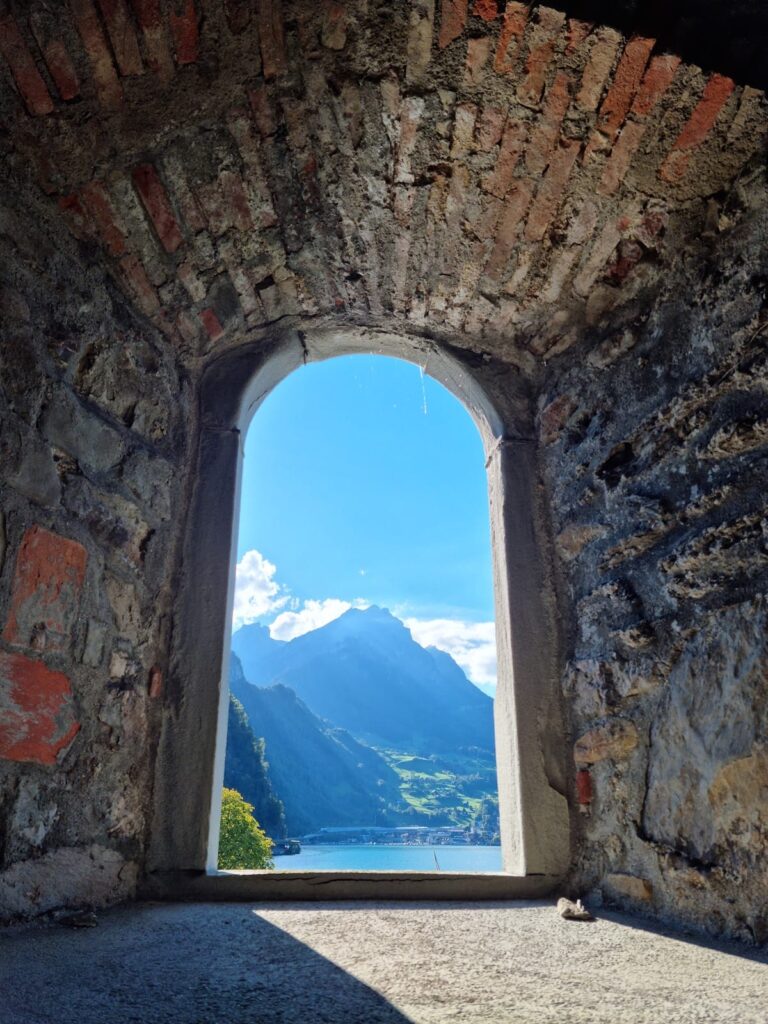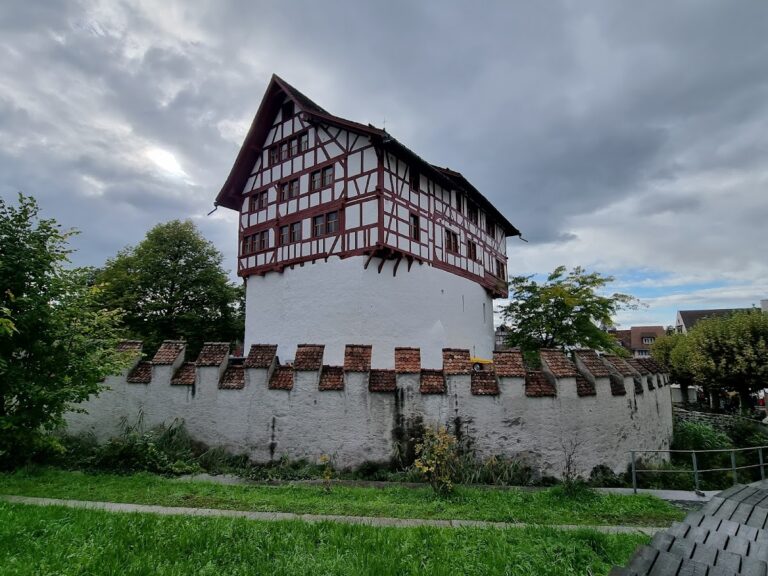Schnitzturm: A Medieval Defensive Tower in Stansstad, Switzerland
Visitor Information
Google Rating: 4.5
Popularity: Very Low
Google Maps: View on Google Maps
Official Website: www.stansstad.ch
Country: Switzerland
Civilization: Medieval European
Remains: Military
History
The Schnitzturm is a medieval stone tower located in Stansstad, Nidwalden, Switzerland. It was constructed between 1310 and 1315 by local builders as part of a defensive system protecting the lakeshore of Lake Lucerne. This tower formed a key element in the region’s efforts to guard against attacks from the nearby city of Lucerne and other external threats.
In 1315, the Schnitzturm played an active role during the Battle of Morgarten, a conflict between the Swiss Confederates and the Habsburg forces. According to a 1428 chronicle, defenders used a mill stone from the tower to destroy an enemy ship approaching from Lucerne. Despite this resistance, the attackers eventually broke through the defenses and plundered Stansstad. Following this battle, the fortifications were strengthened with earthen and stone walls, but the tower’s strategic importance declined after Lucerne joined the Old Swiss Confederacy in 1332.
During the mid-14th century, the region of Unterwalden was divided into Obwalden and Nidwalden, which shared responsibility for the tower and surrounding defenses. This joint ownership led to neglect, and by 1587 the Schnitzturm had fallen into disrepair. A local assembly, known as the Landsgemeinde, ordered renovations that included adding round arch windows, relocating the entrance to ground level, and constructing a flat hipped roof. These changes reflected a shift from purely military use to more practical functions.
In 1634, lightning struck the tower’s roof, causing damage that was only partially repaired. This neglect allowed the interior to deteriorate, and the tower was repurposed for drying fishing nets. Obwalden undertook repairs again in 1736, maintaining the structure despite its reduced military role. The last recorded military use occurred during the 1798 French invasion. The tower was manned, and the wooden palisade was temporarily replaced with floating fir trunks to defend against the French fleet. Although the defenders held out for several days, the town and tower were captured and burned on April 9, 1798.
In 1880, the cantonal authorities restored the Schnitzturm, adding a staircase, an observation platform, and reinstating crenelations that had existed before the 1635 roof. Ownership of the tower was historically divided, with Obwalden holding two-thirds and Nidwalden one-third. In 1997, Obwalden transferred its share to the municipality of Stansstad. Today, the Schnitzturm is recognized as a Swiss heritage site of national significance and is featured in the municipal coat of arms.
Remains
The Schnitzturm stands on an artificial spit extending into Lake Lucerne, originally built as part of a medieval lakeshore defense system. The tower has a square base measuring 8.8 meters on each side and rises to a height of 16 meters. Its walls are 1.4 meters thick at the base, constructed from stone to provide strong protection against attacks.
The tower was integrated into a larger fortification network that included a wooden blockhouse called the Teller and a palisade made of approximately 8,000 wooden pillars driven about two meters into the lakebed. This palisade formed a defensive barrier with a channel known as the Grendel, allowing controlled boat access. These features highlight the strategic use of both stone and wood in the defense system.
Renovations in the late 16th century altered the tower’s appearance and function. Round arch windows were added, and the original second-floor entrance was closed. A new entrance was created at ground level on the south side, and a flat hipped roof was built atop the tower. After lightning damage in 1634, the roof was only partially repaired, leading to interior decay. The tower was then used for drying fishing nets, showing a shift from military to practical use.
The 1880 restoration restored the tower’s medieval character by adding a staircase, an observation platform, and reinstating crenelations that had existed before the 1635 roof. The tower remains largely intact and accessible, preserving its stone construction and defensive features. It stands as a well-preserved example of medieval military architecture on Lake Lucerne’s shore.










